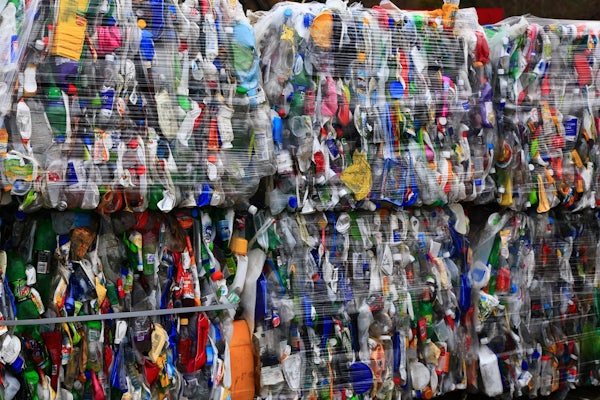Upcycling is the new recycling
Marcus Foston and Ulugbek Kamilov won a DOE grant to upcycle plastic waste

The world generates about 300 million tons of waste plastic annually, and more than 90% of all plastic ever made has never been recycled. Part of what drives all that waste into landfills or into the environment is the difficulty of recycling plastic, which is designed to last for a very long time. Traditional plastic recycling suffers from a fundamental flaw, says Marcus Foston: there’s no financial incentive for companies to do it.
“There’s a lot of cost associated with cleaning, sorting and processing materials for recycling. It’s expensive enough that there’s just no value in it,” said Foston, associate professor of energy, environmental & chemical engineering in the McKelvey School of Engineering at Washington University in St. Louis. “A lot of people in my field are thinking, ‘Okay, how can we upcycle? How do we take plastic waste, put it through some conversion technology, and make something that's more valuable than the virgin plastic itself?’”
Foston and his co-investigator, Ulugbek Kamilov, assistant professor of electrical & systems engineering and of computer science & engineering in McKelvey Engineering, recently received a $577,780 grant from the U.S. Department of Energy to do just that.
Foston is designing new heterogeneous catalysts to process plastic waste. Catalysts lower the activation energy of a reaction, allowing the reaction to happen more easily. Foston’s heterogeneous catalysts also have the advantage of being in a different state than the material in which they are spurring a reaction. In this case the catalysts are solid, making them easy to separate from liquified plastic after the upcycling reaction is complete. The solid catalysts tend to be more robust and stable over time, ultimately making the process cheaper.
With Kamilov’s help, Foston will test the new catalysts using advanced experimental techniques, including neutron scattering, at Oak Ridge National Laboratory. Currently, the profile produced using neutron scattering captures the structure of the plastics during upcycling reactions, but Kamilov is developing a deep learning tool to improve them.
“We use a high-flux neutron source to be able to see the evolving plastic molecule during the reaction without damaging the polymers with radiation, but we can’t take the picture fast enough, so it comes out smeared,” Foston explained. “Professor Kamilov is building a machine learning model trained on how the detector works that can take the information we do have and use it to finish the scattering profile for higher detector time resolution.”
By improving detector resolution and removing noise and artifacts, the team will reveal how plastic waste molecules change in real time during the upcycling reaction and establish next generation experimental protocols that capture and decipher heterogeneous chemical environments.
Click on the topics below for more stories in those areas
- Research
- Computer Science & Engineering
- Energy, Environmental & Chemical Engineering
- Electrical & Systems Engineering





